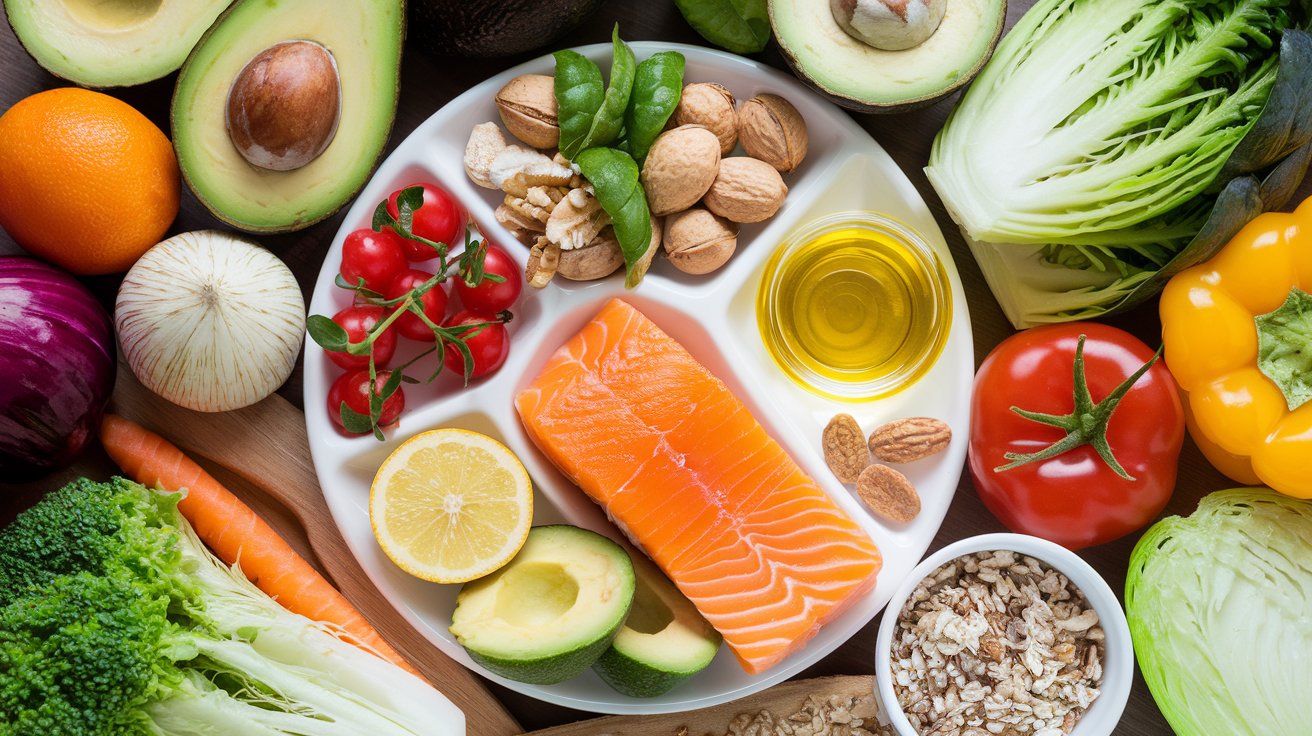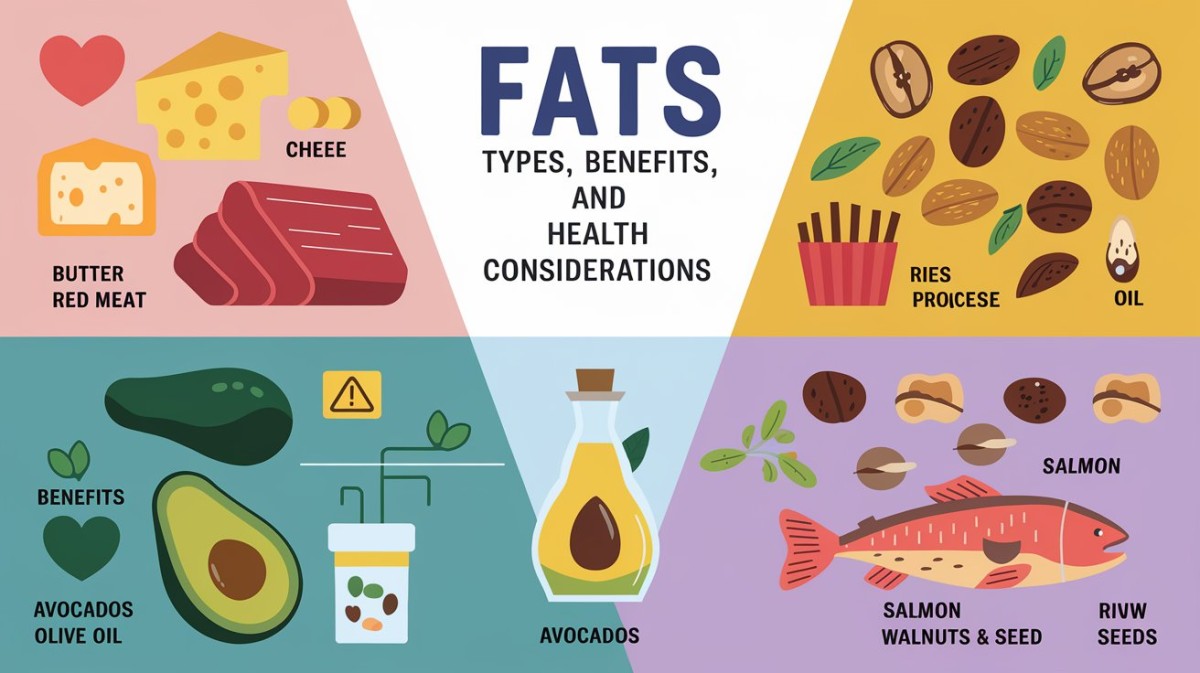Fats have been one of the most discussed and debated macronutrient sources that most people get confused with. While there are those who believe that fats are bad for our health, there are those who believe that fats are good for health as they are a part of the fats list. The truth is somewhere in the middle, because not all fats are the same. In this blog, I will discuss various kinds of fats, their importance, possible advantages and disadvantages of taking high quality fats or excessive low quality fats.
What Are Fats?

Proteins, fats and carbohydrates are the macronutrients which help supply energy to the human system. Fats are made up of molecules containing carbon hydrogen and oxygen. They, when ingested, are hydrolyzed into fatty acids and glycerol and gets absorbed in the body to do various activities.
Fats are important for a variety are bodily processes. They offer energy, maintain cell division, preserve organs, assist in nutrient uptake and control hormones. However, the kind of fat and portion consumed highly influence the course of health of a specific individual.
Types of Fats
Fats can be classified into four main types based on their chemical structure: There are Saturated fats, trans fats, monounsaturated fats and poly unsaturated fats. All types can affect health but in different ways.
1. Saturated Fats
Saturated fats are present in consumed animal products: meat, butter, cheese, full-fat dairy products, and in some tropical oils including coconut and palm oils. The word “saturated” means that these fats lack double bonds between two carbon atoms; instead, they are bonded with hydrogen only.
There is some evidence that high amounts of saturated fats are associated with high levels of LDL cholesterol – the type of cholesterol that tends to deposit fats within the arteries thus raising rates of heart diseases and stroke. Due to this, the health organizations encourage the low intake of saturated fats and should not exceed 10% of the daily calorie intake.
2. Trans Fats
Trans fats are processed through a method known as hydrogenation, that is used to right turn liquid oils into solid fats. These fats are present in many foods, which are processed like margarines, baked foods and the foods that are fried. It is also named as partially hydrogenated fats and is said to be the worst type of fat because they not only increase LDL cholesterol but also bring down the HDL cholesterol level which is helpful in removing cholesterol from the blood.
Federal nutrition guidelines classify foods containing trans fats as not safe, as they raise the risk of heart disease, stroke, and type 2 diabetes. However, at the present time, many countries have made effort cutting down, or completely eliminating trans fats in food products because of health consequences.
3. Monounsaturated Fats
Saturated fats are thought to be worse for consumers’ health compared to monounsaturated fats that can be identified in olive oil, avocados, and nuts. These fats have one double bond in their molecules making them much more unsaturated and liquid at room temperature.
One study has pointed that monounsaturated fats are useful as they lower LDL cholesterol levels but also increase HDL cholesterol levels if not results in increased levels. For this reason there is evidence to suggests that they are linked to reduced heart disease and stroke rates. Moreover, these fats also help to enhance insulin response to glucose and therefore, consuming them is advisable for people with or with prediabetes.
4. Polyunsaturated Fats
Like monounsaturated fats, polyunsaturated fats are recognised as ‘good’ fats that are good for the heart. They contain more than one double bond in their structure and can be divided into two main types: Omega-3 and Omega-6 fatty acids.
Omega-3 fatty acids are present in many fatty fishes that include salmon, flax seed, chia seed and also in the walnut. It has an important functioning in the brain, also has preventive actions in inflammation and has benefits for the health of the hearts. Omega-6 fats include fats in vegetable oils such as sunflower, soybean, corn and they also carry certain health benefits when taken in moderation. However, whilst the consumption of foods high in omega-6 fatty acids could help to reduce inflammation, populations that intake a large amount of omega-6 and little omega-3 often contribute to chronic diseases.
Health Benefits of Fats
Contrary to what negative reputation most fats have, they contain important nutrients the body needs. Here are some of the key benefits of consuming healthy fats:
1. Energy Source
Fats provides the body energy in concentrated form with nine calories per gram, caloric value, which is more than twice that of carbohydrates or proteins. This makes them a highly useful energy reserve and during times when they miss meals over long periods of time, they do not suffer.
2. Nutrient Absorption
Vitamin A, D, E and K are known as fat soluble vitamins because the body needs fat in order to absorb them. If there is a lack of essential fats the body cannot properly metabolise these nutrients and may well become deficient.
3. Brain Health
Otherwise known as essential fats, fats especially Omega3 fatty acids are essential for brain functions. Our brain is about 60% fat and omega-3s are involved in the regulation of a variety of brain functions including lubrication and memory retention. These fats also help to prevent other-related diseases such as Alzheimer’s disease among other neurological disorders.
4. Hormone Regulation
Fats take part in synthesis of hormones that control metabolism, immune system and reproductive system in the body. It is mostly a kind of fat also known as cholesterol which is required to make body hormones like estrogen and testosterone as well as cortisol.
The Dangers of Taking Excessive Amounts of Fat

They point out that fats are essential in the diet but when taken in large proportions or in the wrong type, the following health problems occur.
1. Obesity
Because fats contain many energy in units of kcal, diseases associated with excessive caloric intake such as obesity can result from consuming excessive fats in food without adequate energy expenditure and from inadequate intake of other food groups. Since obesity is a well-known risk factor, it is connected with such diseases as type 2 diabetes, heart diseases, and some types of cancer.
2. Heart Disease
As earlier outlined, saturated and trans fats can increase cholesterol levels increasing the probability of heart disease. These arteries therefore become narrow in cross sectional area with increased risks of heart attacks and strokes due to cholesterol present in LDL Cholesterol.
3. Inflammation
Omega 6 fatty acid is not healthy when consumed in plentiful proportions relative to omega 3; high consumption if omega 6 fatty acid contributes to inflammation. Chronic inflammation is associated with arthritis, diabetes and cardiovascular diseases.
How to Incorporate Healthy Fats into Your Diet
To get the best out of fats while avoiding the negative-side effects, one has to pay much attention to the recommended intake levels of healthy fats. Here are some tips for incorporating fats into a balanced diet:
❖ These healthy fats are monounsaturated and polyunsaturated and should be consumed from natural sources such as olive oil, avocado oil, flaxseed oil.
❖ Avoid foods containing saturated fats as well as meats that are high in fat content, and low fat cheeses.
❖ To reduce, or eliminate in the best way possible, the intake of trans fats, one should read food labels carefully and avoid processed and fried foods.
❖ Omega-3 can also be obtained from diet such as fish and other products such as chia seed and walnuts which help the heart and brain.
Conclusion
Fats are necessary nutrients that are involved in quite a number of body functions including generation of energy, assimilation of food nutrients, proper functioning of the brain, and the body hormones. However, that is not an absolute truth; some fats are worse for your heart than others. Replacing the consumption of fats that raise the LDL level and promote inflammation with monounsaturated and polyunsaturated fat can help you get the best of fats and avoid the worst.
